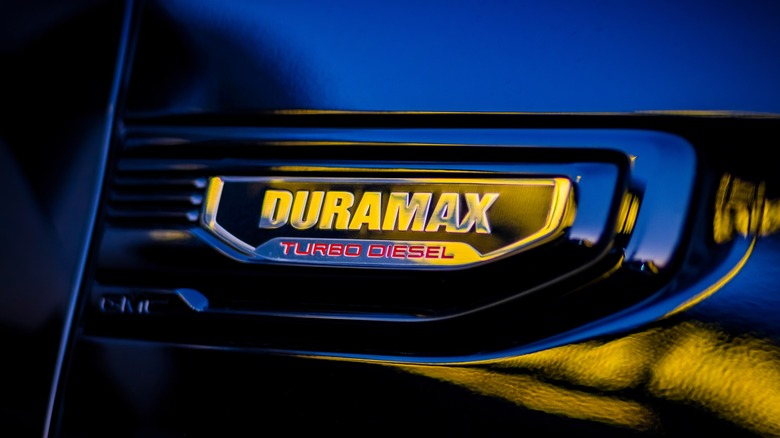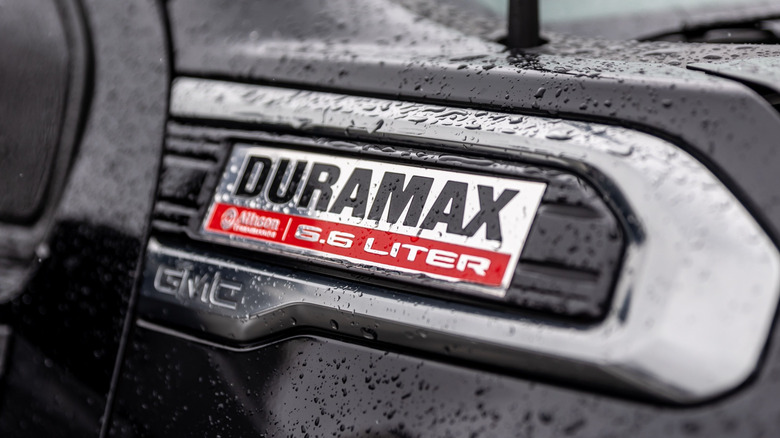How To Tell If A Duramax Engine Is An LB7 Or LLY
In the diesel engine arena, there are, arguably, few powerplants held in quite as high a regard as the vaunted 6.6L Duramax. The turbocharged beast is the brainchild of General Motors who, in 1998, teamed with Japanese automaker Isuzu to make the U.S. market's first high-pressure common-rail, direct-injection engine. The collaboration indeed birthed the Duramax, which arrived in the early 2000s. With its release, GM altered the course of diesel power for many years thereafter, leading even competitors like Ford and Cummins to eventually follow suit.
These days, Duramax engines are still powering many of the trucks and SUVs manufactured by Chevrolet and GMC. As for those first Duramax Turbo-Diesel builds, the 300 horsepower engines made their official lineup debut under the hoods of Chevrolet Silverados and GMC Sierras in 2001. The powerful V8 engines did so bearing the name LB7, and yes, they were eventually replaced by Duramax builds branded LLY.
That changeover occurred just a few years after GM began producing Duramax engines, with the LLY arriving in mid-2004. If you want to figure out which of these Duramax variants is under the hood of your early-2000s GM truck, the easiest way to do so is by verifying the vehicle's model year, with the LB7 utilized between 2001 and 2004, and LLYs being used between 2004 and 2006. You can also verify the build by inspecting the engine's VIN number, with the eighth number in the LB7 sequence being a 1 and LLYs featuring a 2 in that spot.
What's the difference between the Duramax LB7 and LLY?
Now that you can tell a Duramax LB7 and LLY apart, you might be wondering exactly why it's important to determine which engine is powering your Chevy or GMC build. It is, after all, not a coincidence that the two Duramax powerplants have different names and different VIN number designations, because even if they bear a striking resemblance at the surface level, the LB7 and LLY are actually different engines.
If you're familiar with the legacy of the Duramax, you no doubt recall that the LB7 models were not without their problems. Among other issues, the engines were notorious for a design flaw that made them increasingly susceptible to injector failure. To their credit, GM owned up to the issue, correcting the flaw and offering a 200,000-mile warranty on the replacement parts used in the treatment. However, if you are on the cusp of purchasing a used GM vehicle with an LB7 Duramax, you'll want to confirm whether or not it still has the original injectors. If it does, you'll need to replace them ASAP, or likely face a pricey breakdown in the future.
Thankfully, when GM debuted the LLY Duramax in 2004, the engineering team had corrected the fuel injector issue altogether. Just FYI — the upgraded injectors are not only more reliable than the LB7, but also improve fuel atomization and combustion, leading to increased power output. On the horsepower front, the ponies jump to 310 hp, with torque clocking in at 520 lb-ft. So if raw power is your Duramax endgame, the LLY is the way to go — even if the LB7 ranks higher among the best of GM's Duramax builds.

